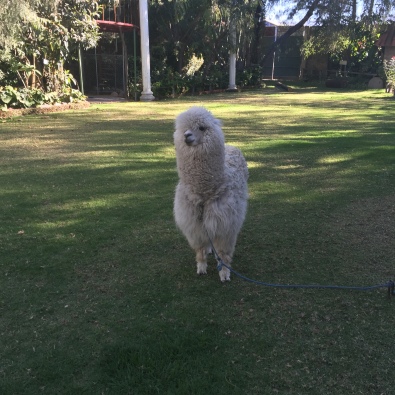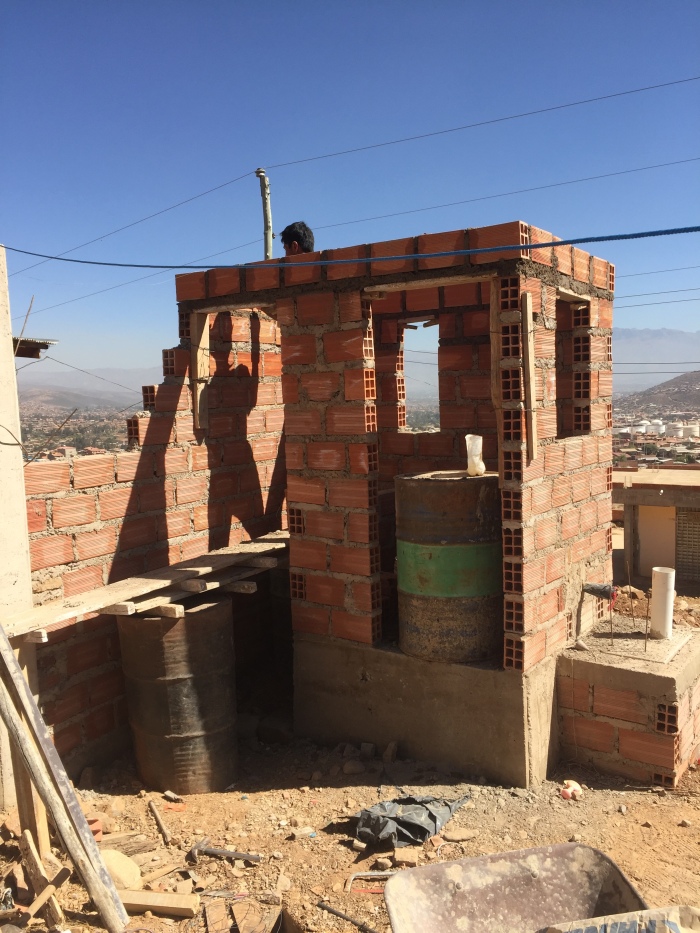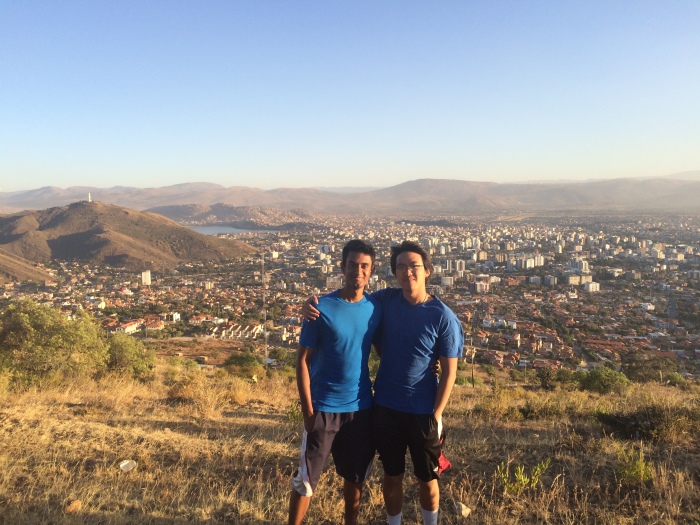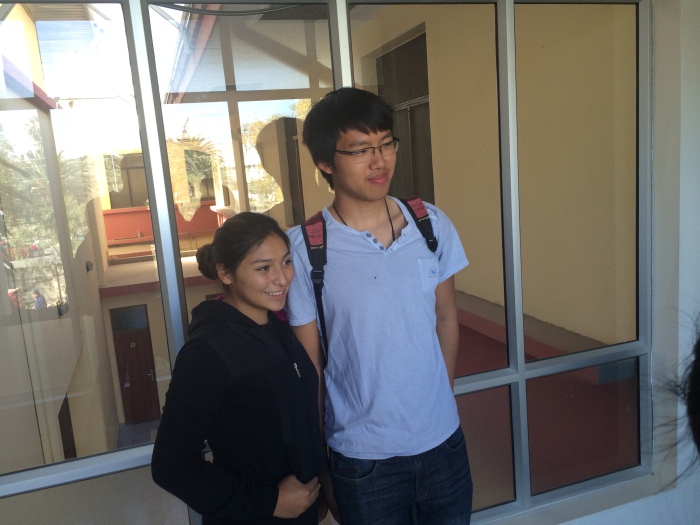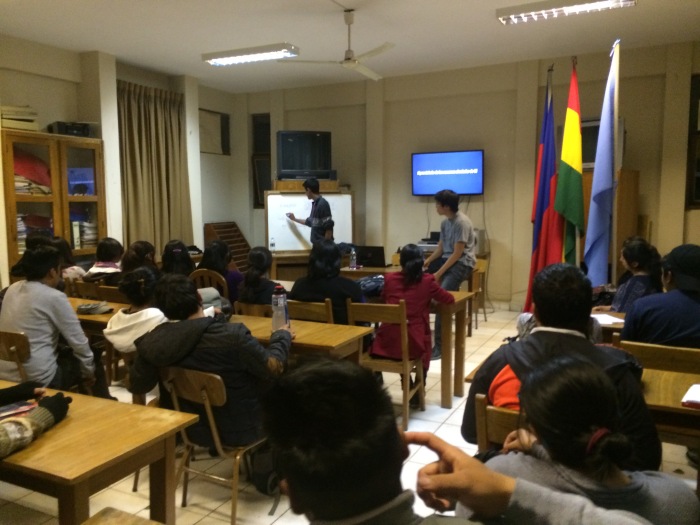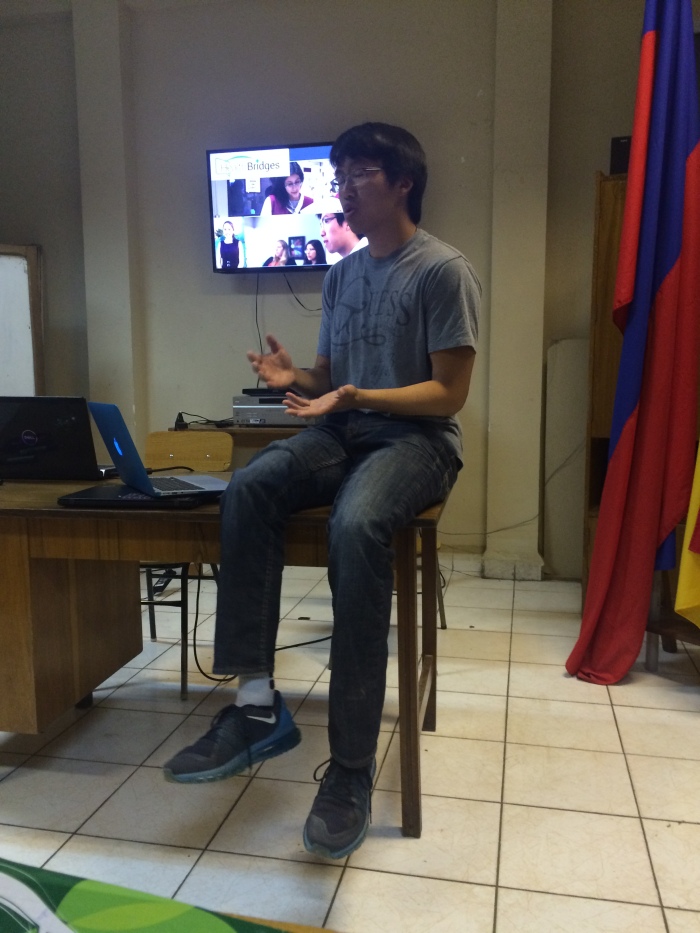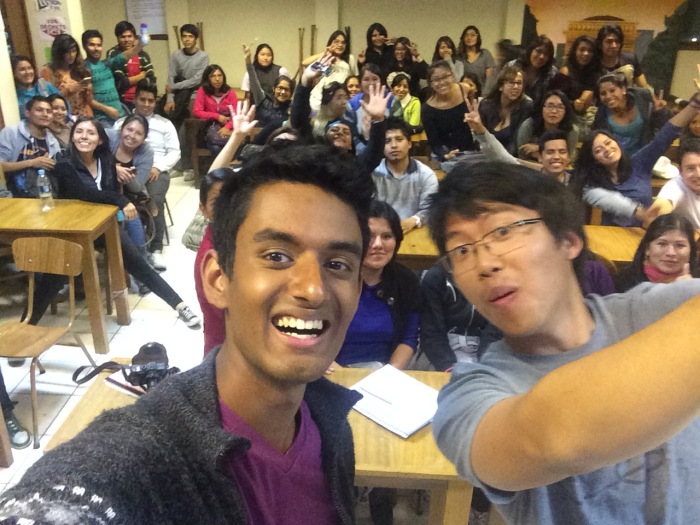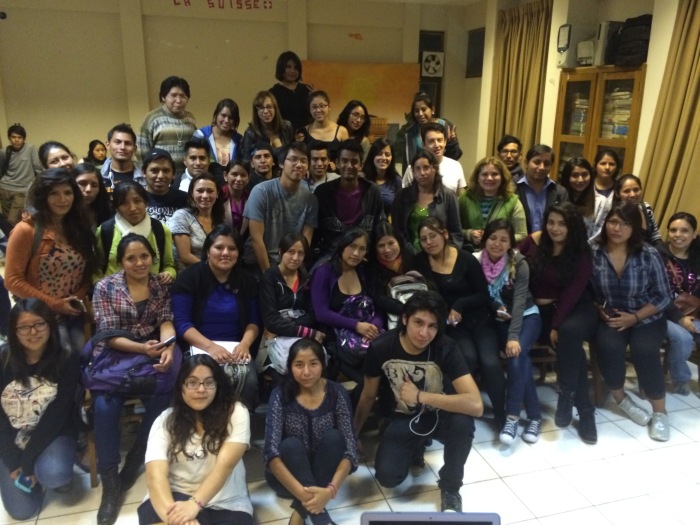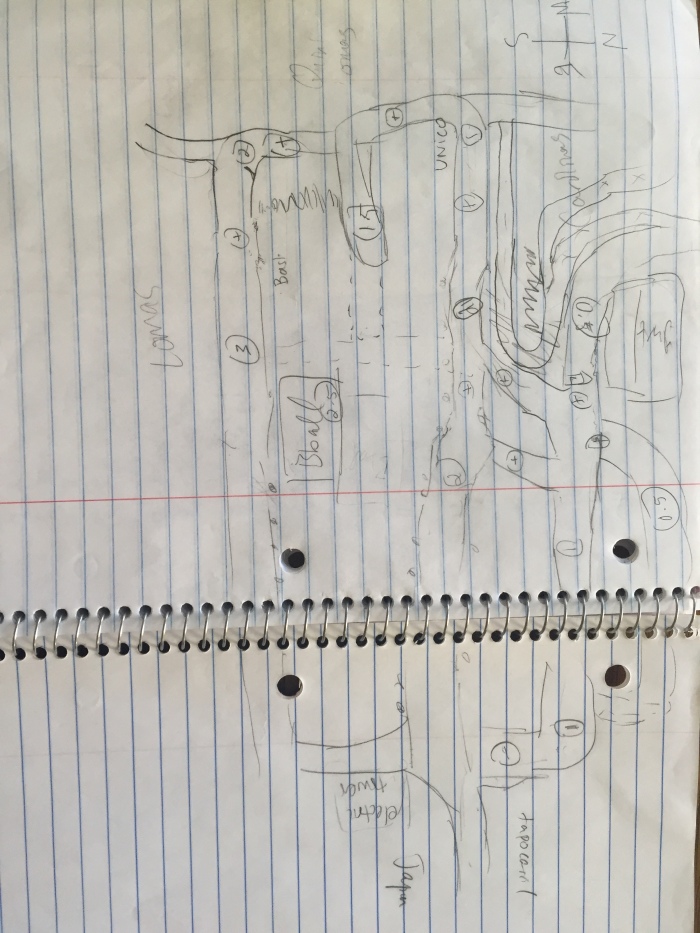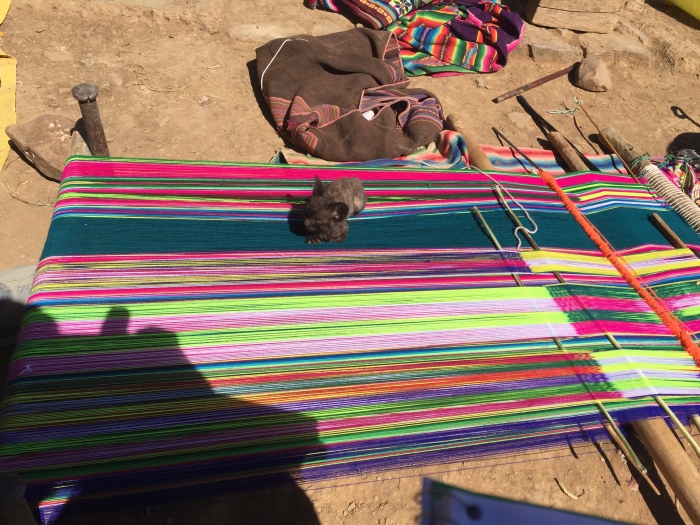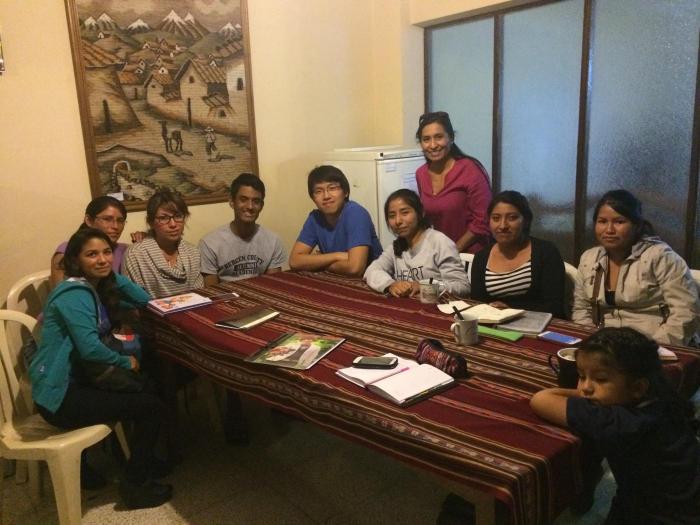This morning, I woke up early for some reason, and I decided to work on the training manual. By 10 o’clock, Akshay (who had woken up an hour later) and I finally finished the first draft of our manual. It looks absolutely gorgeous. We put a copyright sign on it, and I felt so legitimate. This trip was just overall so legitimate. I made some eggs and ate an orange for a quick breakfast, and then Akshay and I decided to chill by playing several rounds of speed chess. Think the score was tied at 3-3. We need to have a tiebreaker when he gets back.
At 12, I hung out with my “fanclub” (really some friends I made at San Simon University), and we went to the Jesus Christ statue in Cochabamba. It was breathtaking. Before we took the cablecar up, I went to the souvenir shop and got a alpaca-print sweater for myself and a Bolivian hat for my dad’s birthday. The ride up was so cool! You could gradually see more and more of Cochabamba as you rode up. At the top, my friends took many pictures of me, and I got to walk around the Jesus Christ statue. It’s huge. It overlooks all of Cochabamba. It also has holes in it, so that the wind can pass through, and not knock it down. One could say that Jesus Chris is quite “holey” (creds. Akshay). I said goodbye to my friends, and they said that would await my return at the airport. Sweet.

Rodrigo, the Minister of Justice, drove us back down, and his car was lit, as usual. Great songs blasted from the car, ranging from Bolivian/Brazilian trap music to “I Took a Pill in Ibiza” to “Sweet Home Alabama” to Harvard’s “Get Lowell”. Rodrigo dropped me, Akshay, and Claudia off for lunch at this nice Italian restaurant. Rodrigo went back home to take a shower.
At the restaurant, it took an hour for our food to arrive. Typical Bolivian restaurants. We had to tell him that my flight was in an hour to hurry up the process. The bread was good – it was garlic bread. I ordered a dope Pasta Carbonara. Tasted pretty authentic. Rodrigo then picked us up, and we met two SUNY students that Rodrigo befriended at the club last night. They were in Cochabamba working with Save the Children.
We went to Rodrigo’s estate. It’s unreal. He has 2 llamas and 1 alpaca. They actually spit. He also has a toucan and many other tropical birds. He has his favorite blue parrot that he carried around with him when giving a tour of his estate. I got to hold the parrot. It was quite cute. It peed on Akshay. Dodged a bomb there. His estate used to be a restaurant, so we were served some authentic Bolivian dishes like cow tongue and lechón. Rodrigo also showed us his mini museum where there were pictures of the war between Bolivia and Paraguay, as well as other rare collectors items, including guns from the war, the first piano in Bolivia, the first car in Bolivia, and the quill used to sign the Bolivian Declaration of Independence. It was so surreal. He also had a cactus garden, as well as various exotic plants native to Bolivia scattered around the space.
One of Rodrigo’s Brazilian friends came with us, so Akshay lightly conversed with him in Portuguese. On the car ride back, Akshay taught me some Portuguese. It’s actually very similar to Spanish!
When we arrived back at the house, Rodrigo dropped me and Akshay off, and I said goodbye to everyone! It was kinda sad actually. I quickly packed (I would later realize I left my phone charger at the house), and then Akshay and I left for the airport. Checking in took no time at all, so Akshay and I chilled for a while on massage chairs. One thing we noticed is that people in Bolivia litter without consequence. That public health attitude probably should be changed as littering damages the environment!

I said goodbye to Akshay when it was time, and went to the gate. It was really nice hanging out with Akshay because it was like we had a 2 week sleepover. I boarded my flight, and arrived at Santa Cruz without incident. Checked into the dope 5 star Sun Hotel, and decided to call it a night.
